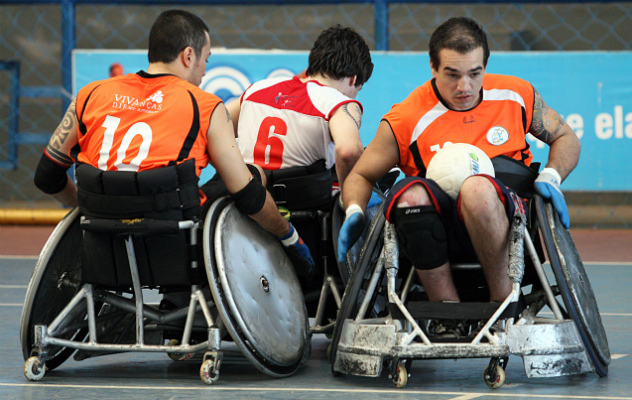Wheelchair Rugby

Wheelchair rugby was developed by quadriplegic athletes in the 1970s in Winnipeg (Canada). Wheelchair rugby made its Paralympic debut at the 1996 Games in Atlanta as a demonstration sport. It was not until four years later that the sport was included in the Paralympic programme, at the 2000 Games in Sydney.
The games are played on 15 metres wide by 28 metres long courts and have four 8 minute quarters. The objective is to carry the ball across the opponent's goal line. Each team has four players and eight substitutes.
The sport is not divided by gender. Men and women play together in a mixed category. To be eligible to play, individuals must have a disability that affects the arms and legs. Players are assigned a classification based on the level of their disability.
Brazil has no tradition in wheelchair rugby. The country has never taken part in the Games. The strongest teams are Canada and the USA, the first to practice the sport and disseminate it, as well as Australia and New Zealand, countries where conventional rugby is extremely popular.
Classification
Wheelchair rugby is played by quadriplegic athletes, men and women. Players are assigned seven different categories, based on the level of their disability: 0.5; 1.0; 1.5; 2.0; 2.5; 3.0 and 3.5. The higher categories are assigned to athletes that have more movements and lower classes are assigned to players with less movement. Classification is based on the following components:
The bench test
Muscle test conducted on all of the extremity of the upper body musculature, in addition to gauging a player’s reach, tone and sensation.
Functional trunk test
The athlete’s trunk is tested, as well as his/her lower body extremities in all possible situations, which could include a manual trunk muscle test;
Functional movement tests
See also
Brazilian Association of Wheelchair Rugby (ABRC)
www.abrc.org.br
International Wheelchair Rugby Federation (IWFR)
www.iwrf.com

